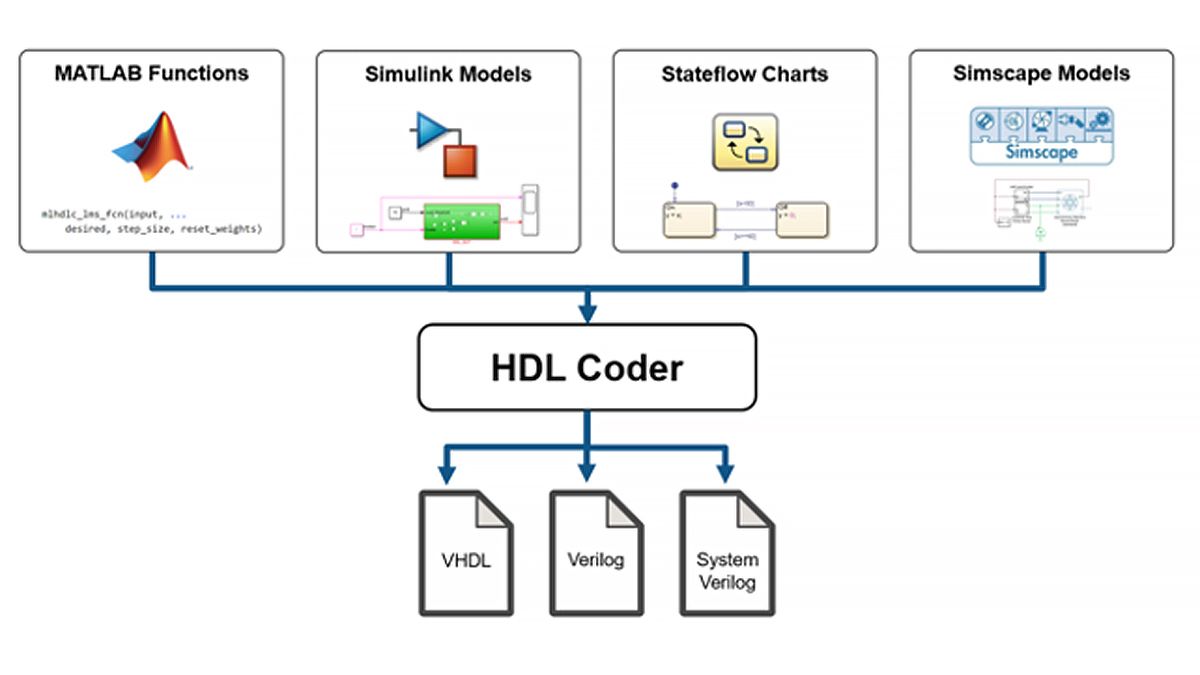Name: SystemVerilog
Type: Hardware Description and Verification Language (HDVL)
Developed by: Originally by Accellera; standardized by IEEE
IEEE Standard: IEEE 1800™
First Released: 2002 (merged into IEEE 1800-2005)
Latest Version: IEEE 1800-2017 (as of 2025)
Predecessor: Verilog
Successor/Alternative: SystemC (C++ based), Chisel, VHDL, and other HDLs
Overview
SystemVerilog is a rich, unified hardware description and verification language (HDVL) that extends Verilog-2005 with a broad set of constructs for modeling, design, simulation, and verification of digital systems. It is widely adopted in the semiconductor industry for RTL design, testbench creation, and functional verification of ASICs, FPGAs, SoCs, and IP blocks.
SystemVerilog provides a single language for both hardware modeling and complex testbench generation. It combines the features of hardware description (like Verilog) and object-oriented programming (inspired by C++ and Java), making it especially powerful for UVM (Universal Verification Methodology)-based environments.
History and Standardization
-
2002: SystemVerilog was introduced by Accellera as an extension of Verilog to support verification (originally based on Superlog).
-
2005: IEEE standardized SystemVerilog as IEEE 1800-2005, combining Verilog-2005 and SystemVerilog into a single standard.
-
2009–2017: Subsequent versions (IEEE 1800-2009, 1800-2012, 1800-2017) added clarifications, bug fixes, and new features.
-
Today: It is the industry-standard HDVL, supported by all major EDA tools (e.g., Synopsys VCS, Cadence Xcelium, Siemens Questa, and Aldec Riviera-PRO).
Major Use Cases
-
RTL Design
-
Structural and behavioral modeling
-
Register transfer level (RTL) design for digital logic
-
Synthesis-friendly features
-
-
Testbench Development
-
Class-based testbenches
-
Constrained-random stimulus generation
-
Coverage-driven verification
-
Assertions and functional coverage
-
-
Formal and Simulation-Based Verification
-
Supports UVM, OVM, and VMM methodologies
-
Works in conjunction with formal tools for assertions and coverage
-
-
IP Integration and SoC Verification
-
Multi-language integration with C, C++, DPI (Direct Programming Interface)
-
Tightly integrated with SystemC, Python wrappers, and co-simulation tools
-
Core Language Features
1. Design Features
-
Improved typing:
logic,bit,int,shortint,byte,enum,struct,union -
Interfaces: Encapsulate connectivity and protocols for reusable and scalable RTL design
-
Modports: Control access to interface methods
-
Packages: Modularize code across files
-
Parameterized Modules and Interfaces: Via
parameterandtypedef -
Clocking blocks: Provide timing control for testbench-to-DUT interactions
2. Verification Features
-
Object-Oriented Programming (OOP): Classes, inheritance, polymorphism, dynamic memory
-
Constrained-Randomization:
rand,randc, and constraint blocks to generate legal test scenarios -
Functional Coverage: Coverage groups, bins, cross-coverage
-
Assertions: Immediate and concurrent assertions for protocol and timing validation
-
Mailboxes, Semaphores, Events: Communication and synchronization primitives
-
Virtual Interfaces: Enable dynamic binding of interface instances to testbench components
3. Interoperability and Extensions
-
DPI (Direct Programming Interface): Interfacing SystemVerilog with C/C++ functions
-
VPI and PLI: Legacy APIs for interfacing simulators and user tools
-
Tool Support: Vendor-specific enhancements in linting, synthesis, emulation, and coverage tools
SystemVerilog in Methodologies
UVM (Universal Verification Methodology)
SystemVerilog is the foundation for UVM, the most widely used functional verification methodology. UVM leverages:
-
OOP features (classes, factories, polymorphism)
-
Sequences, drivers, monitors, and scoreboards
-
Transaction-level modeling
-
Constrained-random testing
-
Reusable verification components (VIP)
Other Verification Frameworks
-
OVM (Open Verification Methodology) – Legacy predecessor of UVM
-
VMM (Verification Methodology Manual) – Synopsys legacy
-
SystemUVM – Language abstraction on top of SystemVerilog + PSS
Adoption and Industry Use
SystemVerilog is the de facto standard for:
-
ASIC and SoC verification at major semiconductor companies (Intel, AMD, NVIDIA, Qualcomm, Apple, Broadcom)
-
FPGA design and simulation
-
IP block development for commercial reuse
-
University and EDA education
Comparison with Other HDLs
| Language | Focus | Strengths | Weaknesses |
|---|---|---|---|
| SystemVerilog | Design + Verification | Unified, modern, widely supported | Verbose, steep learning curve for verification |
| VHDL | Design | Strong typing, mature in Europe | Less suited for verification |
| SystemC | High-Level Modeling | C++ based, transaction-level | Less synthesis-ready |
| Chisel | RTL + Parameterized Hardware | Scala-based, great for generators | Niche, not industry standard |
| Verilog | Design | Simple, legacy support | Limited verification support |
Challenges and Limitations
-
Steep learning curve for class-based verification
-
Complexity in debugging random testbenches
-
Vendor variation in tool support for all language features
-
Limited abstraction for large system modeling (solved partly by PSS, SystemC, or high-level languages)
Recent Developments
-
IEEE 1800-2023 (drafting): Community-driven updates focused on performance, synthesis compatibility, and verification extensions
-
Accellera initiatives: Work on Portable Stimulus Standard (PSS), IP-XACT, UVM roadmap
-
Open-source simulators: Growing interest in open-source support via Verilator, SV2V, and others
Conclusion
SystemVerilog is the most powerful and complete language for modern digital hardware design and verification. With its seamless integration of design, testbench, and functional coverage, it remains the backbone of SoC development and a critical skillset for hardware engineers.
As technology pushes toward complex chiplets, heterogeneous integration, and AI-driven verification, SystemVerilog continues to evolve as part of an increasingly open, automated, and scalable hardware development ecosystem.
HDL Comparison Chart
| Feature / Language | SystemVerilog | Verilog | VHDL | SystemC | Chisel |
|---|---|---|---|---|---|
| Primary Use | RTL + Verification | RTL Design | RTL Design | System-level modeling | Parameterized RTL Generation |
| Verification Support | ✅ Advanced (UVM, OOP) | ❌ Limited | ⚠️ Moderate (VHDL-2008) | ⚠️ Testbench-level | ⚠️ Via Scala test libraries |
| Transactor Libraries | ✅ UVM, OVM | ❌ None | ⚠️ OSVVM, UVVM | ❌ None native | ⚠️ Custom-built |
| Typing Discipline | Weak/Strong hybrid | Weak | Strong | Strong (C++) | Strong (Scala-based) |
| Concurrency Model | Event-driven | Event-driven | Event-driven | C++ Thread/process style | Functional concurrency |
| OOP Support | ✅ Full (class, inherit) | ❌ None | ⚠️ Minimal (VHDL-2008) | ✅ (C++ full support) | ✅ (via Scala) |
| Design Reuse Support | ✅ Packages, Interfaces | ⚠️ Limited | ✅ Libraries, Packages | ✅ C++ Reuse | ✅ High (Scala libraries) |
| Synthesis Friendly | ✅ Yes | ✅ Yes | ✅ Yes | ❌ Limited | ⚠️ Emerging via FIRRTL/MLIR |
| Toolchain Support | ✅ Broad industry-wide | ✅ Broad | ✅ Broad | ⚠️ Mixed | ⚠️ Limited (EDA adoption) |
| Learning Curve | ⚠️ Moderate–High | ✅ Easy | ⚠️ Moderate | ⚠️ Steep (C++ knowledge) | ⚠️ Steep (Scala & tools) |
| Standardization | IEEE 1800 | IEEE 1364 | IEEE 1076 | Accellera / IEEE | Open-source (UCB/CHISEL) |
| Release Year | 2002 (IEEE 2005+) | 1984 (IEEE 1995+) | 1987 | 2000 | ~2012 |
| Used In Industry | ✅ Widely (ASIC/SoC/FPGA) | ✅ Legacy + FPGA | ⚠️ Europe/defense/FPGA | ⚠️ ESL, modeling, AI SoCs | ⚠️ RISC-V, startups, academia |
✅ Best For:
-
SystemVerilog: Full-chip verification, UVM testbenches, complex SoC RTL
-
Verilog: Simple RTL designs, legacy support, FPGA
-
VHDL: Aerospace/defense, high-assurance systems, Europe
-
SystemC: High-level modeling, algorithm-architecture co-design
-
Chisel: Highly configurable hardware generators (e.g., RISC-V, AI cores)












Jensen Huang Drops Donald Trump Truth Bomb on Joe Rogan Podcast